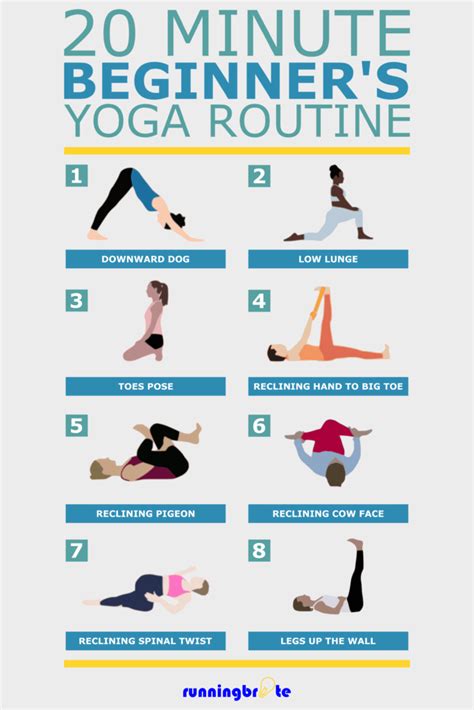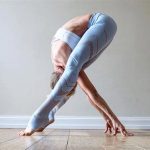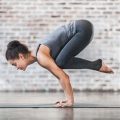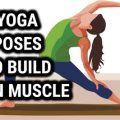Mastering the Basics: A Comprehensive Yoga Sequence for Beginners
Yoga is an ancient practice that brings together mind, body, and spirit, offering numerous benefits for both physical and mental well-being. However, for beginners, it can be overwhelming to know where to start. This guide aims to introduce a structured, accessible, and foundational yoga sequence tailored for those who are new to the practice. Whether you’re looking to improve flexibility, reduce stress, or build strength, this beginner’s sequence will provide the essential building blocks.
Introduction
Yoga, a practice originating from India over 5,000 years ago, has evolved into a globally recognized method for enhancing physical and mental health. The various styles of yoga cater to different goals, but beginners often find themselves struggling with the terminology, flow, and poses. This article will walk you through a beginner-friendly sequence that is both simple and effective, allowing you to gradually build your strength, flexibility, and balance while connecting to your breath and mind.
In this guide, we will focus on key foundational poses, proper alignment, breathing techniques, and how to transition smoothly from one pose to another. We’ll also touch on the historical context of yoga, its modern applications, and how you can incorporate this practice into your daily routine.
Key Concepts
- Asanas: The physical postures used in yoga. For beginners, mastering foundational poses is critical before advancing to more complex ones.
- Pranayama: Breathing techniques used to control the flow of prana (energy) in the body. These techniques help to focus the mind and balance the body.
- Alignment: Proper body positioning is essential to prevent injury and maximize the effectiveness of each pose.
- Flow (Vinyasa): The seamless transition from one pose to another, synchronizing movement with breath.
Historical Context
Yoga’s roots can be traced back to ancient India, with its earliest references in the Rig Veda, a collection of hymns used by Vedic priests. Yoga was initially a spiritual and ascetic practice, focusing on meditation and mental discipline. Over the centuries, it evolved to include physical postures as a way to prepare the body for long periods of meditation.
In the early 20th century, yoga was introduced to the West, where it rapidly gained popularity, particularly the physical aspects of the practice (asana). Today, yoga is practiced by millions worldwide and is appreciated for its physical, mental, and emotional benefits. Modern yoga often emphasizes physical fitness and stress relief, though the spiritual and meditative elements are still a vital part of the practice for many.
Current State Analysis
With the rise of yoga studios, online platforms, and smartphone apps, accessibility to yoga has never been higher. However, the diversity of styles and the flood of information can overwhelm beginners. Many new practitioners feel unsure about where to start or worry about not being flexible enough. Additionally, the commercialization of yoga has sometimes shifted the focus from the practice’s deeper purpose to its physical aspects alone.
For beginners, focusing on foundational poses and creating a routine that suits your body and mind is the best approach. Practicing with guidance from a certified instructor, either in person or through an online class, can also prevent common mistakes such as poor alignment, which can lead to injury.
Practical Applications
Below is a simple yet effective yoga sequence that will help you build a solid foundation. Each pose is explained in detail, with modifications provided for varying levels of flexibility and strength.
1. Mountain Pose (Tadasana)
Stand tall with feet together, arms at your sides, and weight evenly distributed on both feet. Engage your thighs, draw in your navel, and lift your chest. This pose helps establish balance and posture.
2. Downward-Facing Dog (Adho Mukha Svanasana)
From all fours, lift your hips toward the sky, creating an inverted “V” shape with your body. Keep your knees slightly bent if your hamstrings are tight. Focus on lengthening your spine and grounding through your hands and feet.
3. Plank Pose (Phalakasana)
Shift forward from Downward-Facing Dog into Plank. Ensure that your shoulders are aligned over your wrists, and your body forms a straight line from head to heels. This pose strengthens the core and arms.
4. Cobra Pose (Bhujangasana)
Lie face down and place your palms under your shoulders. Press into your hands and gently lift your chest off the ground, keeping your elbows slightly bent. This backbend strengthens the spine and opens the chest.
5. Warrior I (Virabhadrasana I)
Step one foot forward into a lunge and raise your arms overhead. Keep your front knee bent at 90 degrees and your back leg straight. Square your hips forward. Warrior I builds strength in the legs and core while improving balance.
6. Child’s Pose (Balasana)
From all fours, sit your hips back onto your heels and stretch your arms out in front of you. Rest your forehead on the mat. This pose helps to release tension in the back and shoulders.
Case Studies
Here are some real-world examples of how beginners have integrated yoga into their daily routines:
| Case | Challenges | Outcome |
|---|---|---|
| John, Office Worker | Lower back pain, tight hamstrings | Improved posture, reduced pain through regular Downward Dog and Cobra Poses |
| Samantha, Student | Stress, difficulty focusing | Experienced greater calm and clarity through regular practice of Child’s Pose and Pranayama |
| Mark, Athlete | Lack of flexibility, muscle tightness | Gained greater flexibility in hamstrings and hips, improved recovery time |
Stakeholder Analysis
- Beginners: Seek to improve flexibility, reduce stress, and build strength.
- Instructors: Focus on providing guidance to ensure proper form and prevent injury.
- Healthcare Providers: May recommend yoga for its benefits in reducing stress and improving mental well-being.
- Commercial Studios: Aim to attract and retain beginners through accessible classes and beginner-friendly programs.
Implementation Guidelines
- Start Slow: Focus on mastering foundational poses before advancing to more complex asanas.
- Use Props: Blocks, straps, and blankets can help support proper alignment and make poses more accessible.
- Consistency is Key: Practice regularly, even if only for 10–15 minutes a day, to see progress.
- Listen to Your Body: Don’t push through pain—modify poses as needed and focus on gradual improvement.
Ethical Considerations
As yoga has grown in popularity, there are ethical concerns about the commercialization and appropriation of this ancient spiritual practice. For beginners, it’s essential to approach yoga with respect for its roots and an understanding that it is more than just a physical exercise. Awareness of cultural sensitivities and a mindful, respectful approach to the practice can help preserve its authenticity.
Limitations and Future Research
While this sequence provides a solid foundation for beginners, it is important to acknowledge the limitations of a one-size-fits-all approach to yoga. Everyone’s body is different, and what works for one person may not work for another. Future research into personalized yoga routines, based on individual body types, health conditions, and goals, could greatly enhance the effectiveness of the practice.
Furthermore, while yoga’s mental and emotional benefits are widely acknowledged, more empirical research is needed to fully understand the long-term impacts of yoga on mental health, particularly for beginners.
Expert Commentary
Yoga, when practiced with mindfulness and proper technique, offers immense benefits for both physical and mental well-being. For beginners, the journey may seem daunting, but starting with simple, accessible poses, maintaining consistency, and seeking guidance when needed can help unlock the full potential of the practice. It’s crucial to recognize yoga’s holistic nature—combining physical postures with breath control and mental focus will yield the best results over time.








